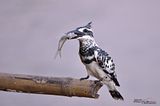These are old photos taken during summer of this year just before I dropped my 3 month old 550D into the mud. There's a small nesting colony of House Swifts (Apus nipalensis) near my part-time job restaurant in Hamawaki (浜脇). There were roughly about 5-7 pairs. They built nests made of dry grass, sticks and other birds' feathers. I personally think it's interesting how these birds collect that much amount of feathers. They don't use their own feathers, but seem to collect them from the muddy river banks nearby. I secretly observed the birds when there was no customer in the restaurant and there was nothing else for me to do. Sometimes I brought my camera with me and took some times taking photos of the swifts after work.
However, it was not easy at all to photograph these birds even at the nests. Because the nest is like a football attached to the ceiling with hollow inside. When the bird arrives at its nest, it mostly just enter through a tiny hole and disappear into the nest. The only time when I could get the whole body of the birds was when they perch at the entrance. Sometimes they spend a long period of time perching there to rest, especially in a rainy day, but normally they don't perch there for too long, so I could only get a few shots with full body. Below set of photos were actually taken by my friend's 5D Mark II. The equipment was great but the birds were not cooperative at all. That day, all of them just kept staying inside their nests.










































































.jpg)
